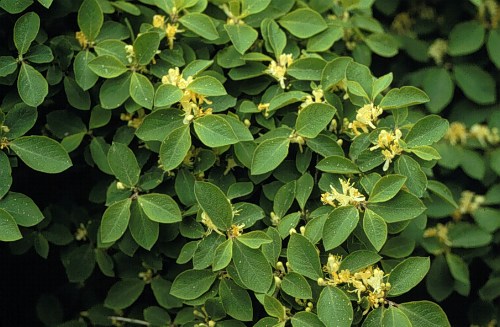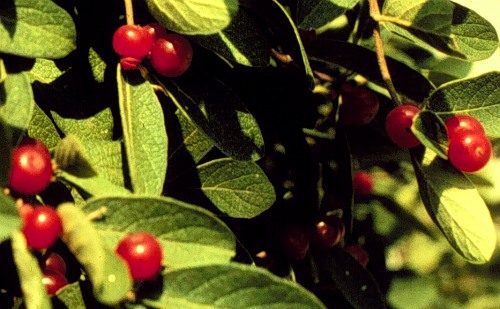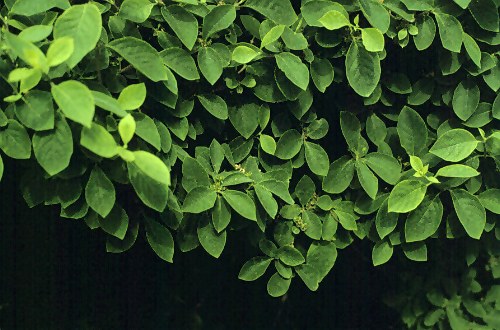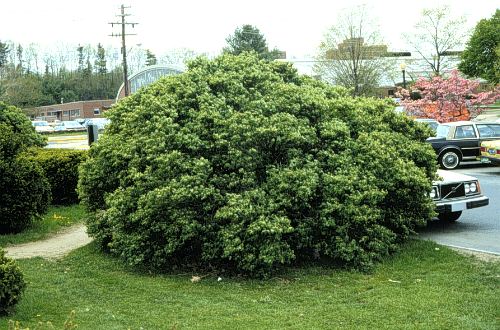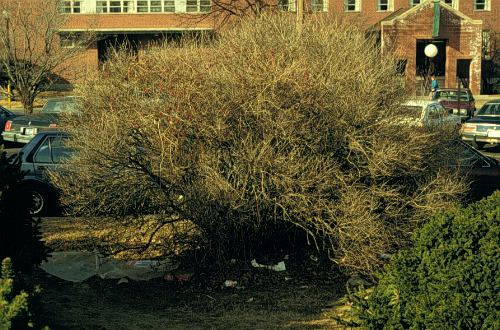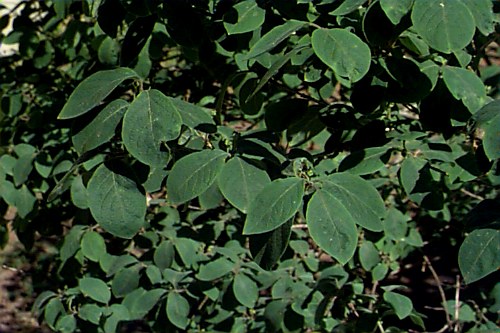Lonicera xylosteum
European Fly Honeysuckle
Caprifoliaceae
ExpandHabitat
- native to Europe
- hardy to zone 4
- Special Note: This species has demonstrated an invasive tendency in Connecticut, meaning it may escape from cultivation and naturalize in minimally managed areas. For more information, .
Habit and Form
- a medium-sized deciduous shrub
- 8' to 10' tall with an equal or greater spread
- rounded, dense form
- arching branches
- medium texture
- fast growth rate
Summer Foliage
- opposite, simple leaves
- deciduous leaves
- obovate leaf shape
- 1" to 2.5" long
- entire leaf margin
- pubescent
- grayish green leaf color
Autumn Foliage
- no fall color
Flowers
- white flowers
- blooms in May
- borne in peduncled pairs
- showy
Fruit
- dark red berry
- ripen in August
- not really of any ornamental significance
Bark
- pubescent brown stems
- gray bark color
Culture
- easy to grow
- full sun to partial shade
- tolerant of difficult growing sites
- adaptable to most soils
Landscape Use
- border
- screen
- grouping or mass
- for flower effect
Liabilities
- can get ragged looking
ID Features
- a medium-sized shrub
- stems pubescent
- deciduous
- flowers white
- flowers found in pairs
- dark red fruit
- grayish green leaf color
Propagation
- by cuttings
- by seed
Cultivars/Varieties
'Claveyi' - This form grows quickly, resists salt damage and is easily pruned to shape. It naturally grows 6' tall with an equal spread. The flowers are yellow, followed by red fruit.
'Emerald Mound' - This selection has a tight mounding habit to only 3' tall and 6' wide. The blue-green foliage is accented by creamy yellow flowers in April and red fruit in late summer. The plant is resistant to Honeysuckle Aphid. It leafs out very early in spring.
'Miniglobe' - A compact form growing only 4' tall and wide, this plant is noted for its excellent hardiness and tight growth that make it suitable as a foundation plant in harsh climates. The flowers and fruit are not conspicuous.

